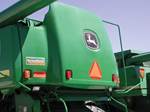Bio-fibers: Green litmus test?
A key point of contention among cellulose fiber suppliers is whether fiber produced as a byproduct of harvesting trees and processing lumber is as green as fiber produced from food or plant crops. That point is considered here.
As green branding becomes increasingly important, the need for competitors in the bio-fibers market to distinguish their products from others has raised a related topic of debate: just how green are the various types of bio-fibers?
A key point of contention among cellulose fiber suppliers is whether fiber produced as a byproduct of harvesting trees and processing lumber is as green as fiber produced from food or plant crops. The question is, after all, fundamental to the rationale of making composites from natural materials in the first place. And it’s an argument on which both sides, apparently, can score points.
Consultant Gordon Shank (GS Consulting, Burnaby, British Columbia, Canada) claims that the large amounts of energy consumed to crack, brush, spin and process cellulose from plant fibers puts them on par with glass in terms of CO2 emissions and overall environmental footprint. He says studies conducted by his company found that extracting cellulose from recycled wood-pulp waste in a closed-loop process fueled by wind power — the method used to manufacture Shank’s BioMid fibers (see “Bio-composites Update: Beyond Eco-branding” under “Editor’s Picks,” at top right) — yields only 1 kg of CO2 per metric tonne of fiber, compared to 500 metric tonnes of CO2 per ton of glass fiber and 300 metric tonnes of CO2 per ton of flax fiber.
Heath Van Eaton, whose company, Agri-Fibers Inc. (Cheyenne, Wyo.), markets cellulose fibers processed from wheat straw, argues that this analysis neglects a full accounting of the energy required to harvest, haul and saw trees into lumber, not to mention the extra energy consumed when wood waste is converted to the powder used in Shank’s process. Van Eaton also points out that wood has a cellulose content of 40 to 45 percent, and wheat straw contains as much as 55 percent cellulose. Additionally, he contends that his fibers win the day on the hot-button issue of sustainability because the biomass is generated from a crop that, unlike trees, is annually renewable.
One can only hope that this dispute will be settled by the market as the bio-composites industry evolves and matures.
Related Content
-
Evolving natural fiber technology to meet industry sustainability needs
From flax fiber composite boats to RV exterior panels to a circularity model with partnerships in various end markets, Greenboats strives toward its biomaterials and sustainable composites vision in an ever-changing market.
-
JEC World 2024 highlights: Glass fiber recycling, biocomposites and more
CW technical editor Hannah Mason discusses trends seen at this year’s JEC World trade show, including sustainability-focused technologies and commitments, the Paris Olympics amongst other topics.
-
Natural fiber composites: Growing to fit sustainability needs
Led by global and industry-wide sustainability goals, commercial interest in flax and hemp fiber-reinforced composites grows into higher-performance, higher-volume applications.














